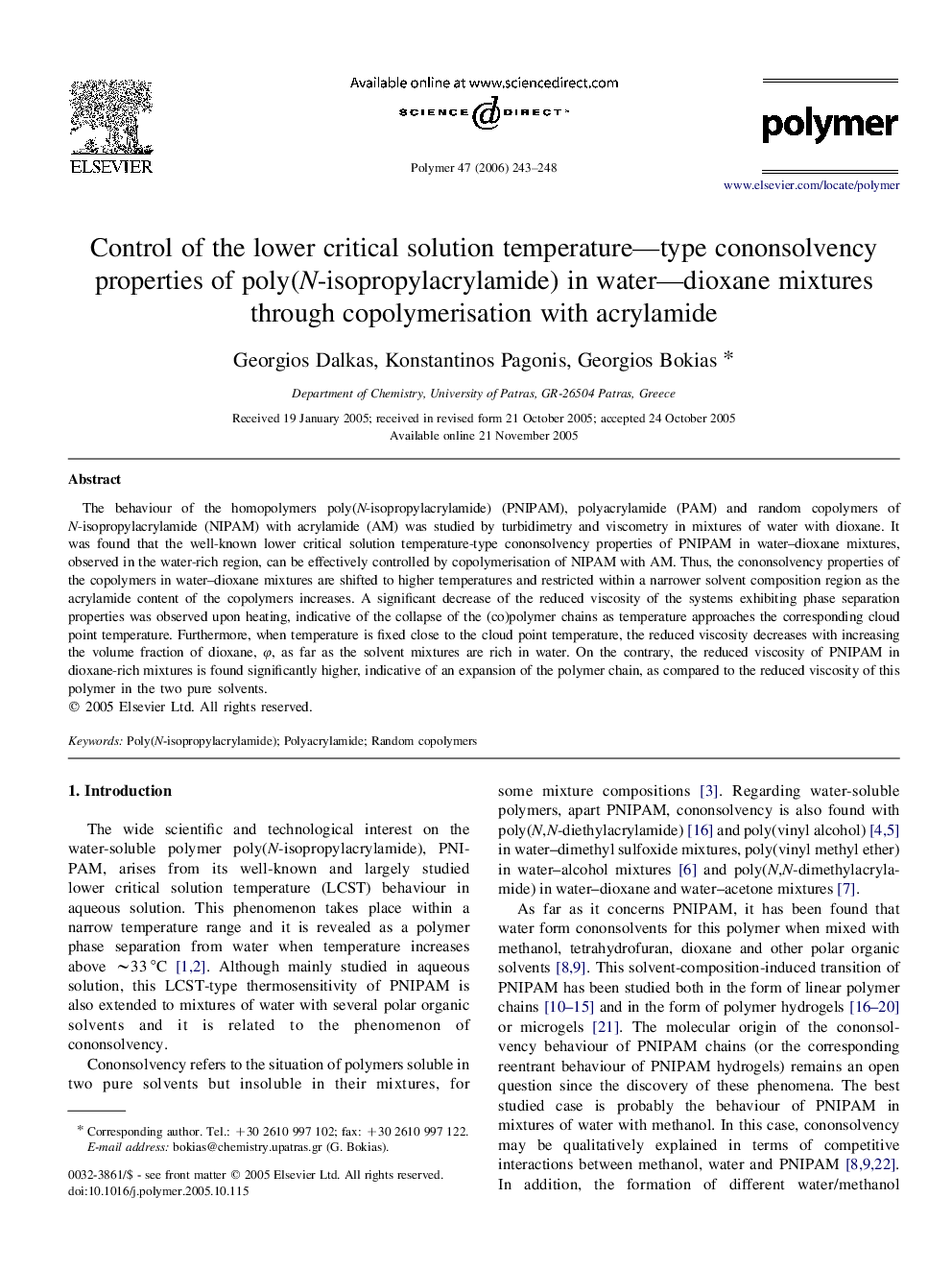| Article ID | Journal | Published Year | Pages | File Type |
|---|---|---|---|---|
| 5190244 | Polymer | 2006 | 6 Pages |
Abstract
The behaviour of the homopolymers poly(N-isopropylacrylamide) (PNIPAM), polyacrylamide (PAM) and random copolymers of N-isopropylacrylamide (NIPAM) with acrylamide (AM) was studied by turbidimetry and viscometry in mixtures of water with dioxane. It was found that the well-known lower critical solution temperature-type cononsolvency properties of PNIPAM in water-dioxane mixtures, observed in the water-rich region, can be effectively controlled by copolymerisation of NIPAM with AM. Thus, the cononsolvency properties of the copolymers in water-dioxane mixtures are shifted to higher temperatures and restricted within a narrower solvent composition region as the acrylamide content of the copolymers increases. A significant decrease of the reduced viscosity of the systems exhibiting phase separation properties was observed upon heating, indicative of the collapse of the (co)polymer chains as temperature approaches the corresponding cloud point temperature. Furthermore, when temperature is fixed close to the cloud point temperature, the reduced viscosity decreases with increasing the volume fraction of dioxane, Ï, as far as the solvent mixtures are rich in water. On the contrary, the reduced viscosity of PNIPAM in dioxane-rich mixtures is found significantly higher, indicative of an expansion of the polymer chain, as compared to the reduced viscosity of this polymer in the two pure solvents.
Related Topics
Physical Sciences and Engineering
Chemistry
Organic Chemistry
Authors
Georgios Dalkas, Konstantinos Pagonis, Georgios Bokias,
